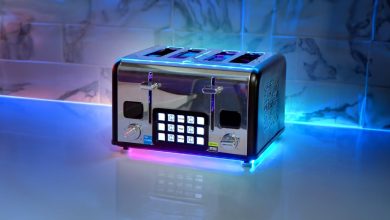Intel Panther Lake Will Be for Laptops Only, Next Major Desktop Architecture After Arrow Lake, Nova Lake, to Arrive in H2 2026

Moore’s Law Is Dead has shed some light on Intel’s future plans and designations for various upcoming generations. Apparently, we might not see a successor to Arrow Lake for desktop until almost 2027.
Arrow Lake, Up to 24 Cores with no Hyperthreading & RUs
Starting off with Arrow Lake, which is Intel’s first generation on the LGA 1851 platform, MLID claims that Arrow Lake will feature up to 24 cores. This is similar to Raptor Lake, and Raptor Lake Refresh, though there are two extra LPE cores, but their inclusion is negligible.
Furthermore, Arrow Lake cuts off Hyperthreading and does not use Rentable Units (RUs). You can read our detailed article regarding Rentable Units here. The single-core uplift is expected to be 25%, with multi-core still undecided, given how Arrow Lake does not have hyperthreading.

Arrow Lake is based on TSMC’s N3B node, with some variants built using Intel’s own 20A process. The start of LGA-1851 could slip into 2025, as Arrow Lake is targeting a late 2024 launch.
Arrow Lake Refresh, Same Architecture but With 40 Cores
In early 2025, Intel will launch Lunar Lake based on N3B which is meant for power-efficient laptops. It is the spiritual successor to Lakefield and the Tiger Lake-U series of CPUs.
In the second half of 2025, 1 year after Arrow Lake, Intel will reinstate the lineup with the leaked 40-Core SKU. It is very similar to how Raptor Lake Refresh and Raptor Lake work in tandem to pave way for the next-big architecture, in this case, Nova Lake.

ARL-R could be almost 50% faster in multi-threaded workloads due to its insanely high core-counts. Sadly for Intel, it will launch next to Zen6. This is kind of similar to if Raptor Lake Refresh launched side by side with Zen5. That would have an absolute bloodbath for Team Blue.
Panther Lake, New Architecture but Reserved for Laptops
Panther Lake is the new Meteor Lake, seeing how Intel is repeating its strategy. Arrow Lake is the big architecture, Arrow Lake Refresh follows up. The next major overhaul comes in the form of a mobile-only series (Panther Lake), serving as a test run for its desktop counterpart (Nova Lake).
By the start of 2026, Intel will unveil Panther Lake which uses the new Cougar Cove P-Cores and Darkmont E-Cores. It apparently introduces a new tile layout and is exclusive to the laptop segment.

Speaking of Cougar Cove, MLID reports that Cougar Cove might not feature RUs as well. In fact, this P-Core architecture is an enhanced version of Lion Cove. Just like how Redwood Cove (MTL) is a modified variant of Raptor Cove (RPL).
Nova Lake, the Architecture to Rule Them All
Nova Lake is the holy grail of all Intel things efficient and performant. These CPUs will indeed feature RUs, though we aren’t sure of the P-Core architecture yet. What we are sure of is the E-Core architecture, ‘Arctic Wolf‘, now that’s a cool name.
As MLID states, this is the fruit of Jim Keller’s efforts with Intel. Nova Lake targets a 20-40% single core uplift over Arrow Lake which is very much doable. The top variants feature 180MB/144MB of LLC, we’re not sure if this is Adamantine (L4) or stacked L3 tiles.

Lastly, should Intel’s foundry catch up to TSMC, Nova Lake will debut using the Intel-18A-next node. On the off chance it doesn’t, TSMC’s N2P is the equivalent Intel will seek.
Source: MLID





